Abstract
Urea is currently considered to be a requirement for the propagation of T-strain mycoplasmas. We report here the replication of T-strain 960 (ATCC 25023) in media prepared from dialyzed components with added putrescine and allantoin but without added urea, or in dialyzed medium containing small amounts of added urea. The least amount of urea which allowed growth in the medium without allantoin was above 10 μg/ml. The amount of urea estimated to contaminate the added allantoin or putrescine was 5 μg/ml or less, which is insufficient to support T-strain replication. T-strain 960 was grown in the presence of urea and the urease inhibitor acetohydroxamic acid AHA where the organisms multiplied at a slower rate in the presence of AHA than in its absence. Urea hydrolysis occurred with concomitant ammonia accumulation and pH increase in cultures with AHA added.
Full text
PDF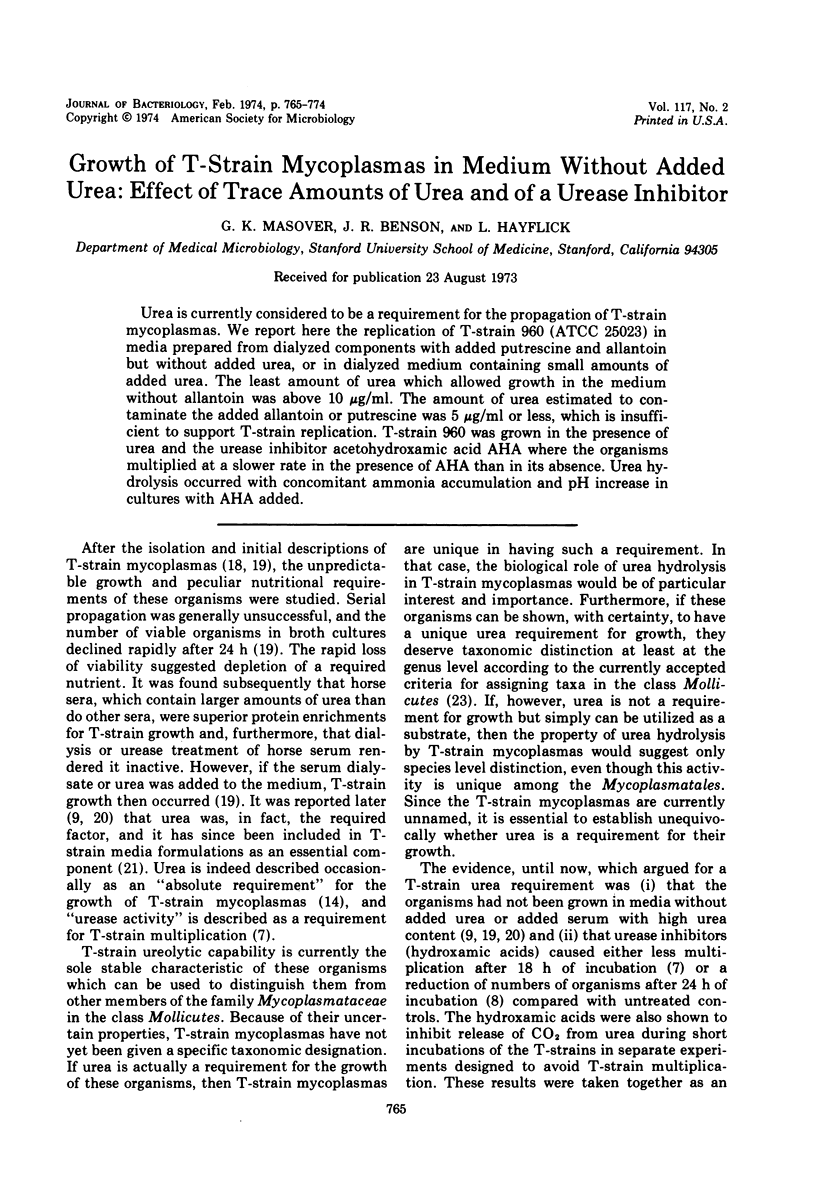
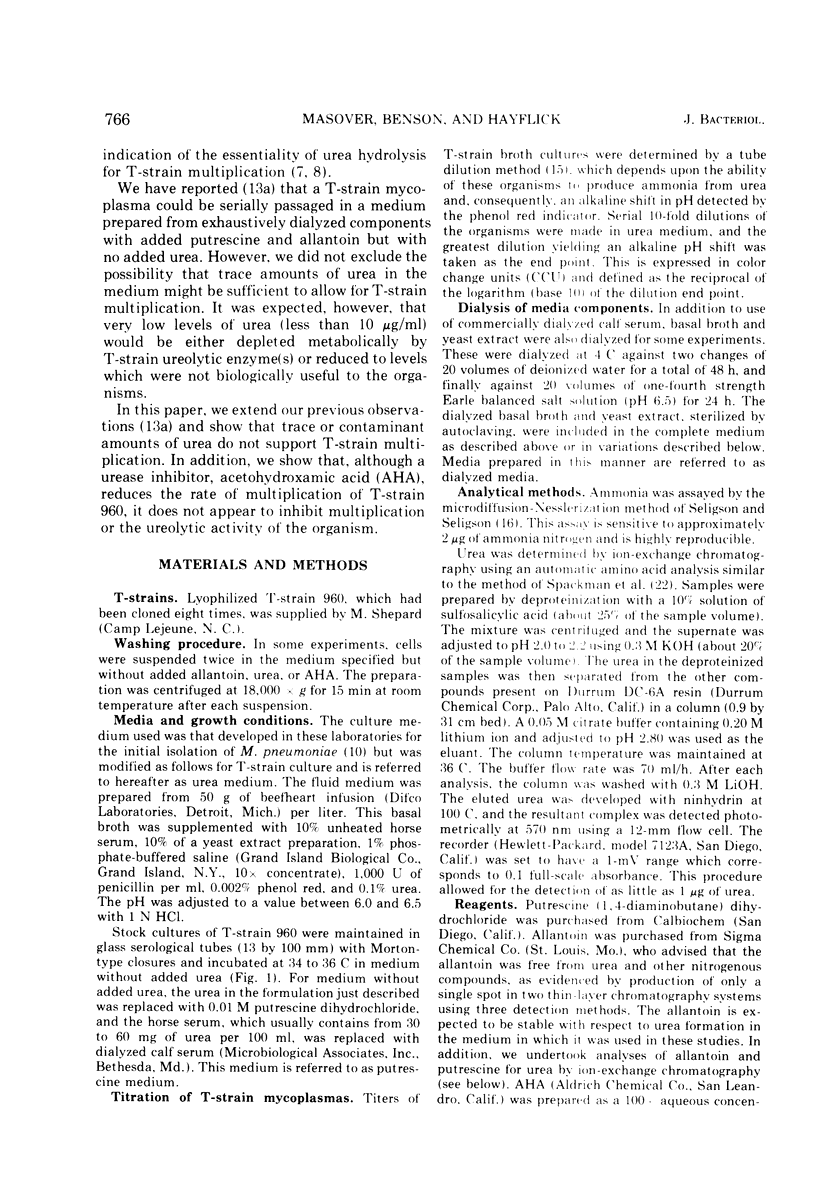
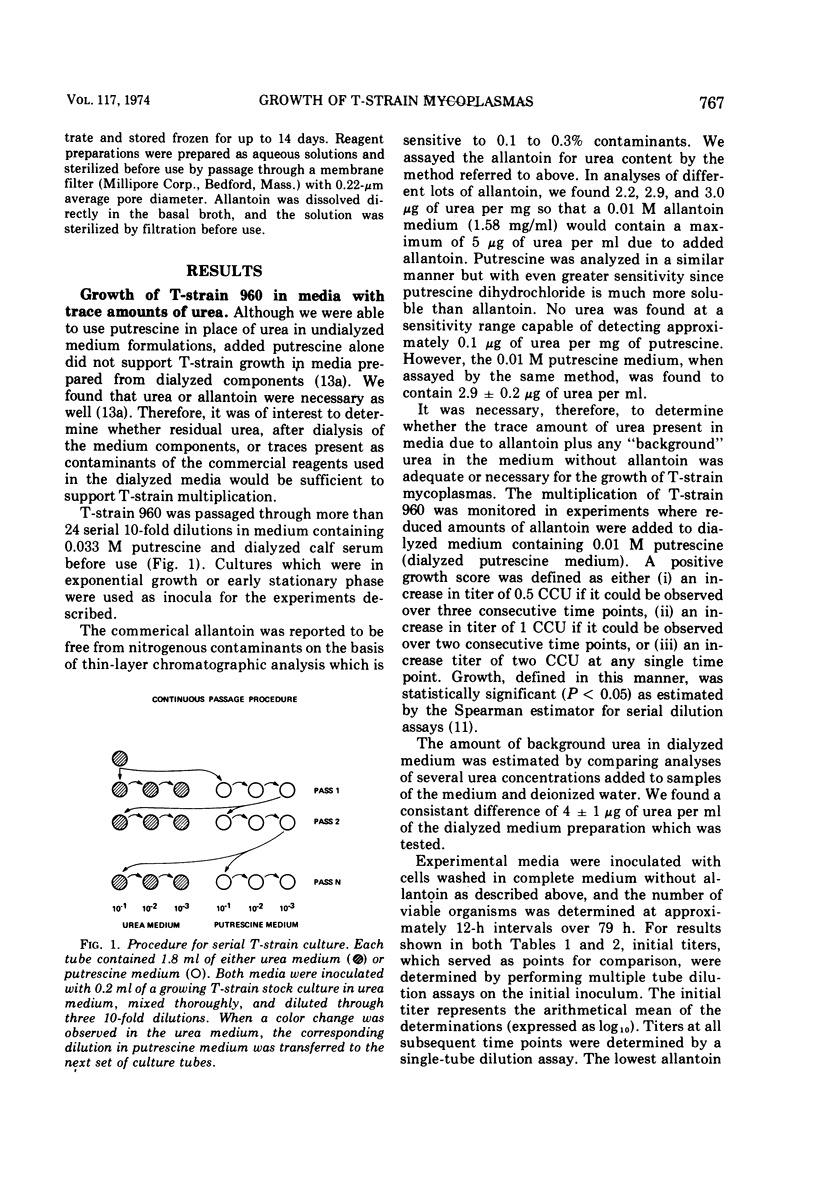
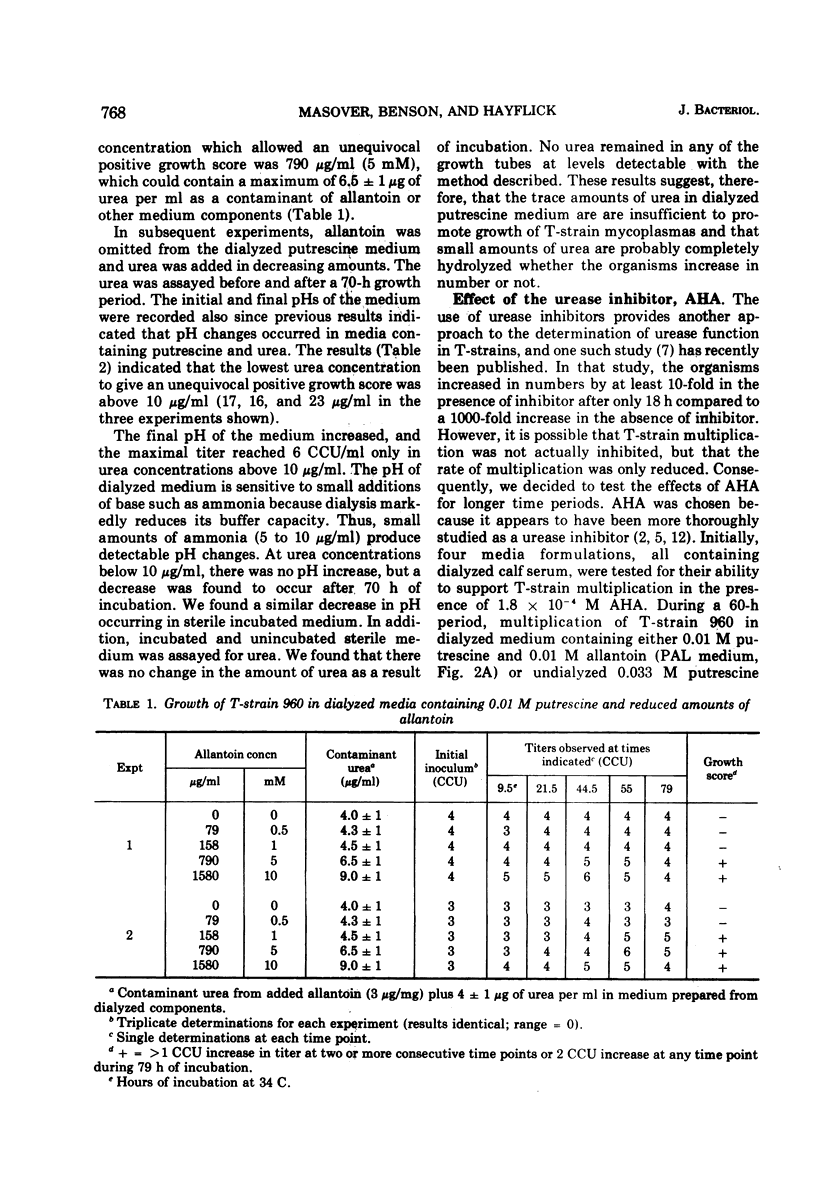
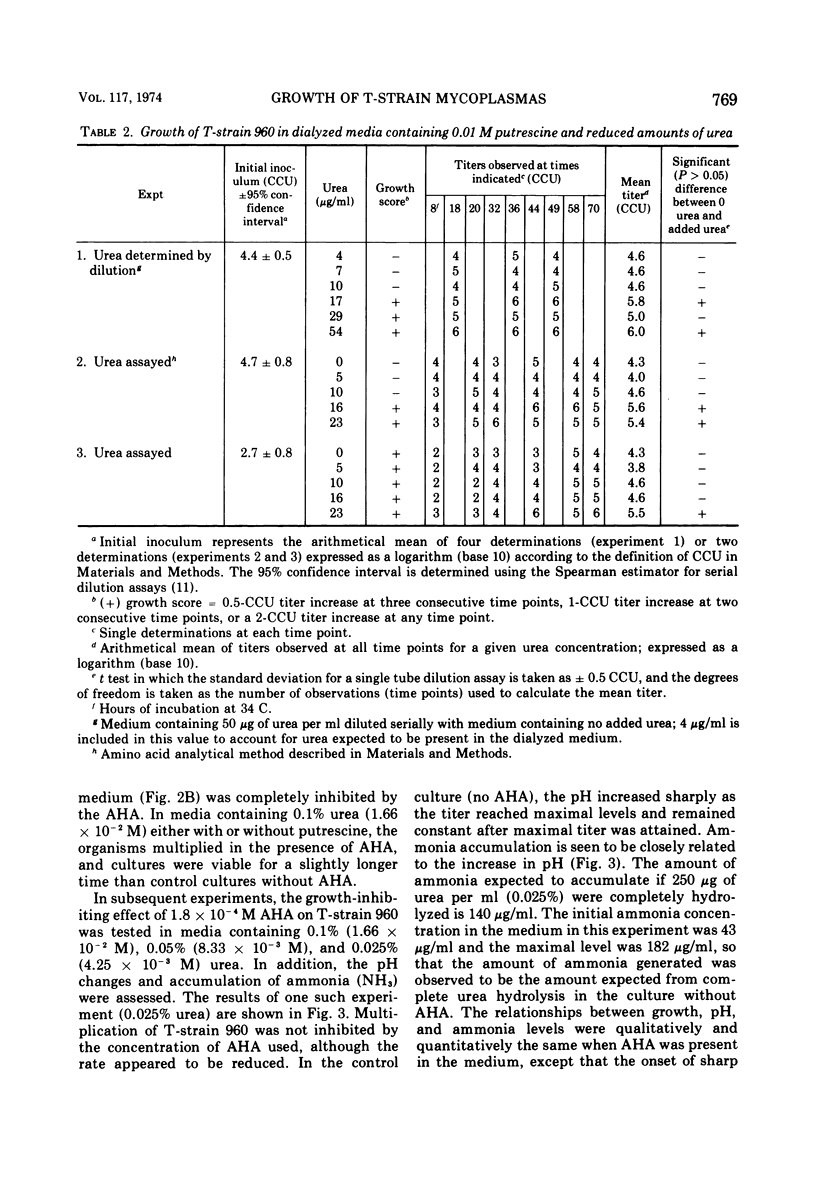
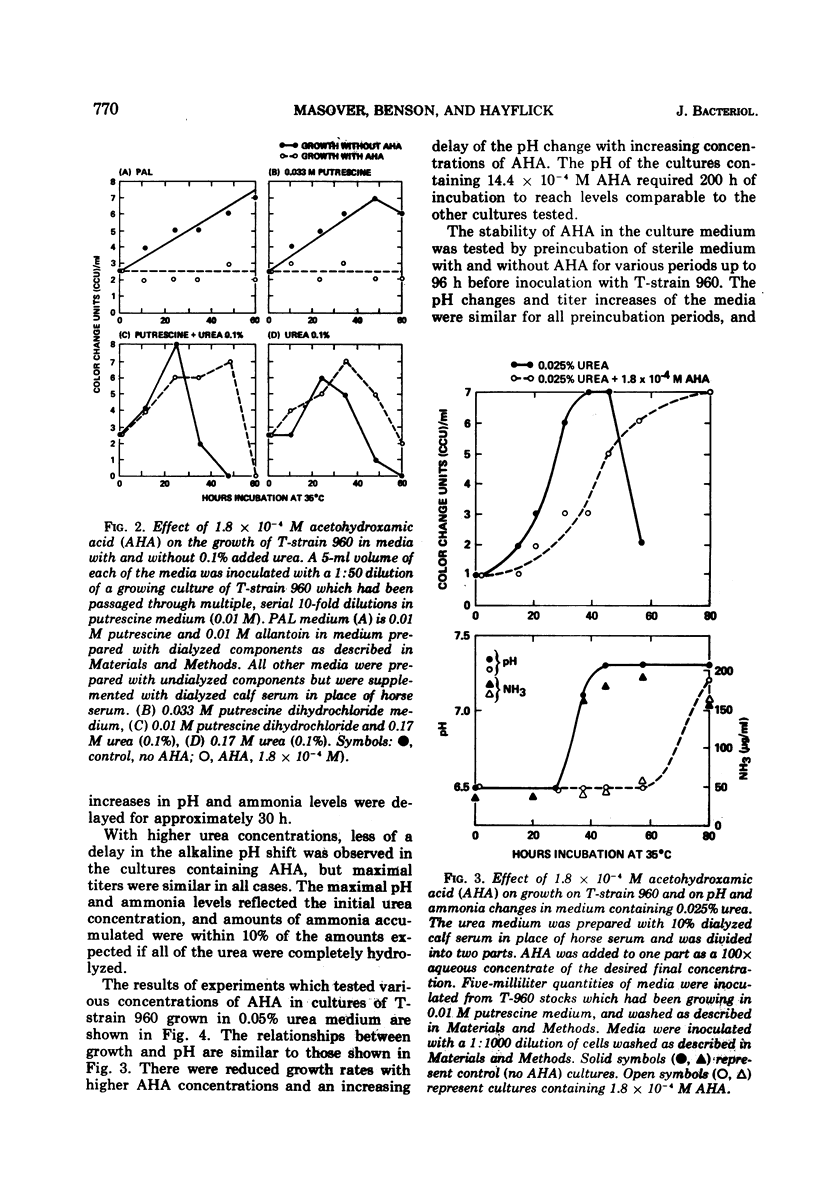
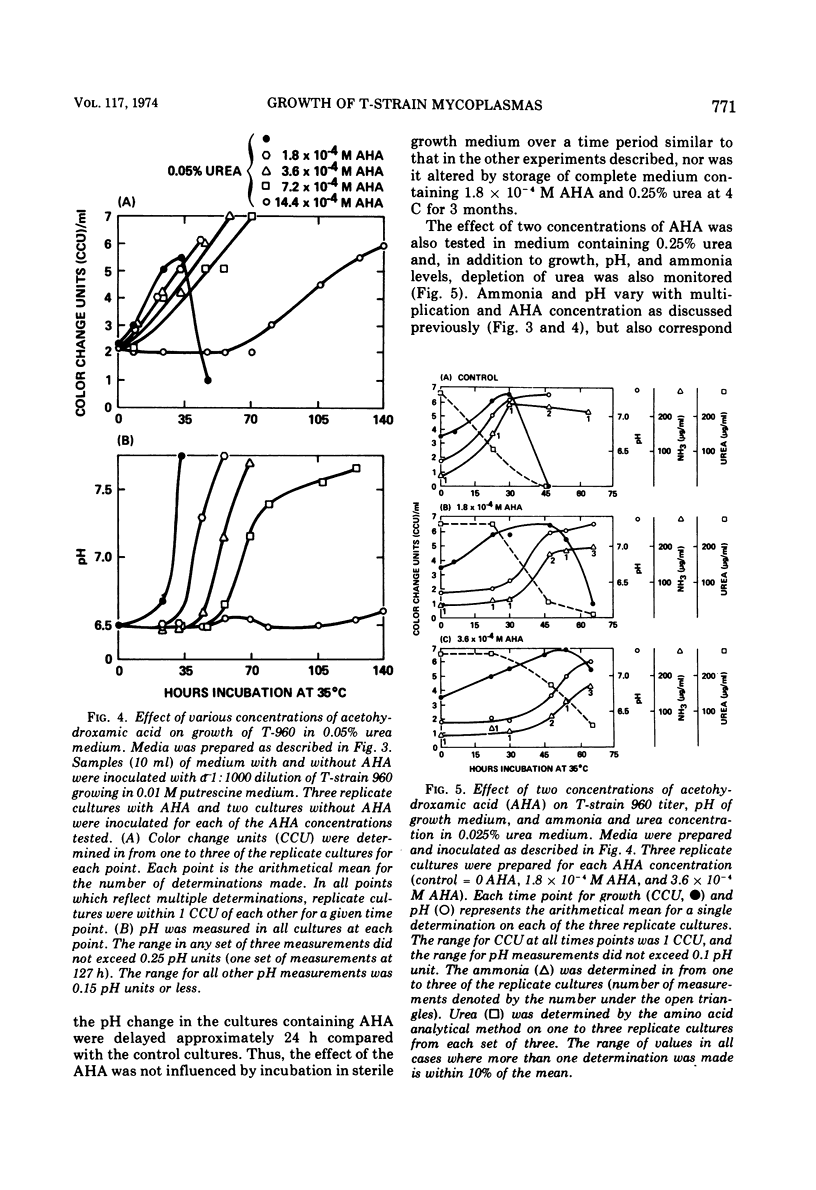
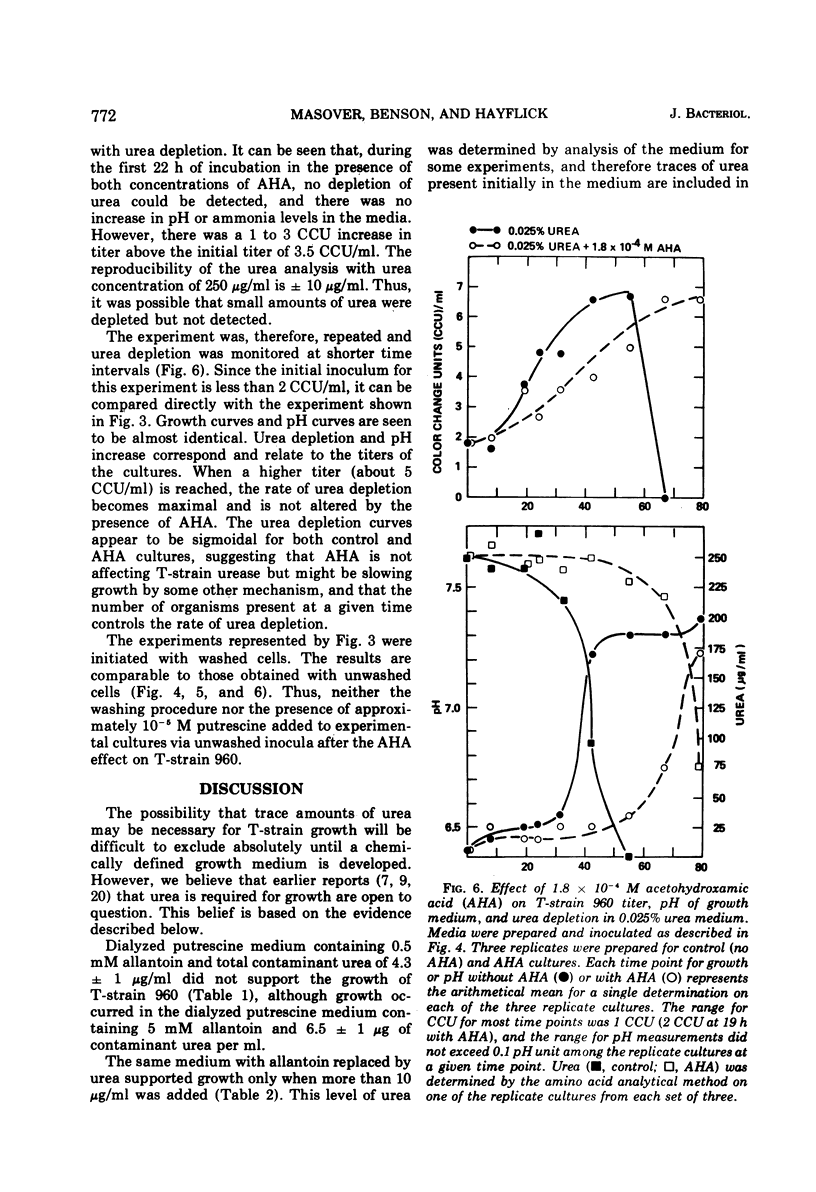
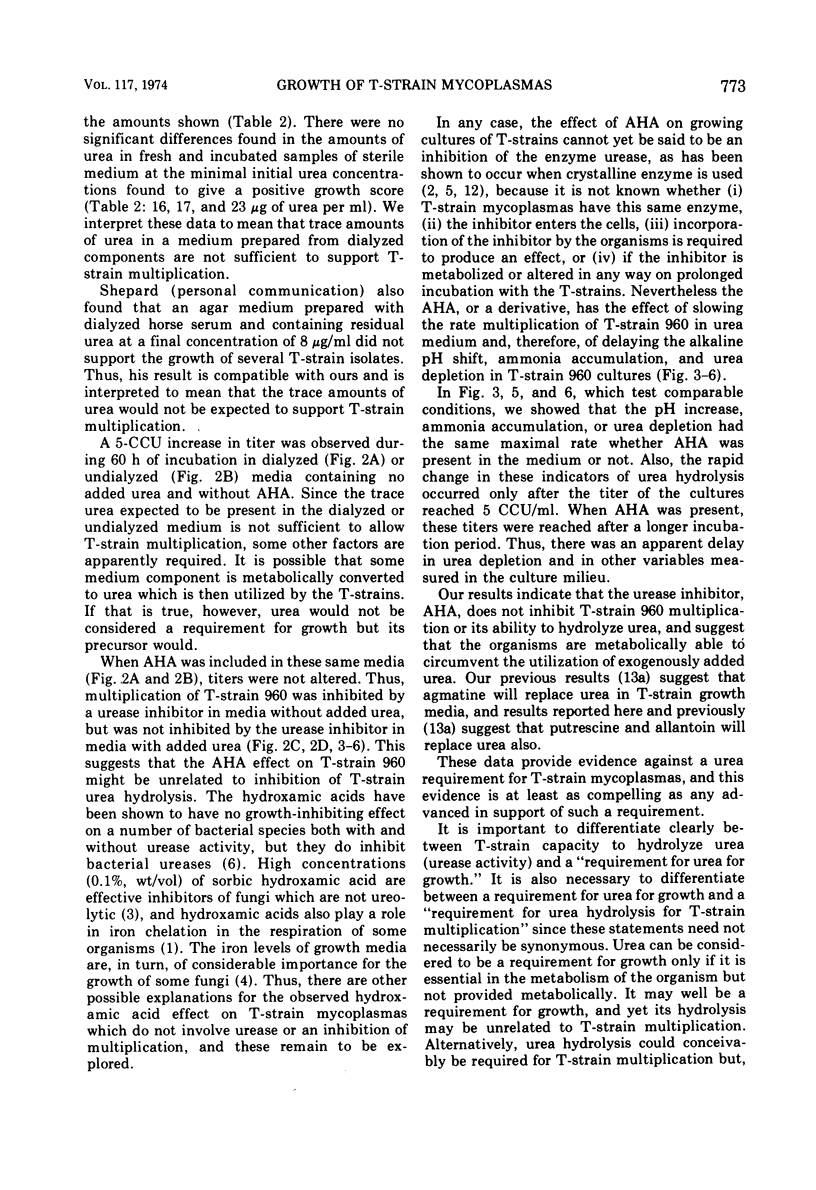
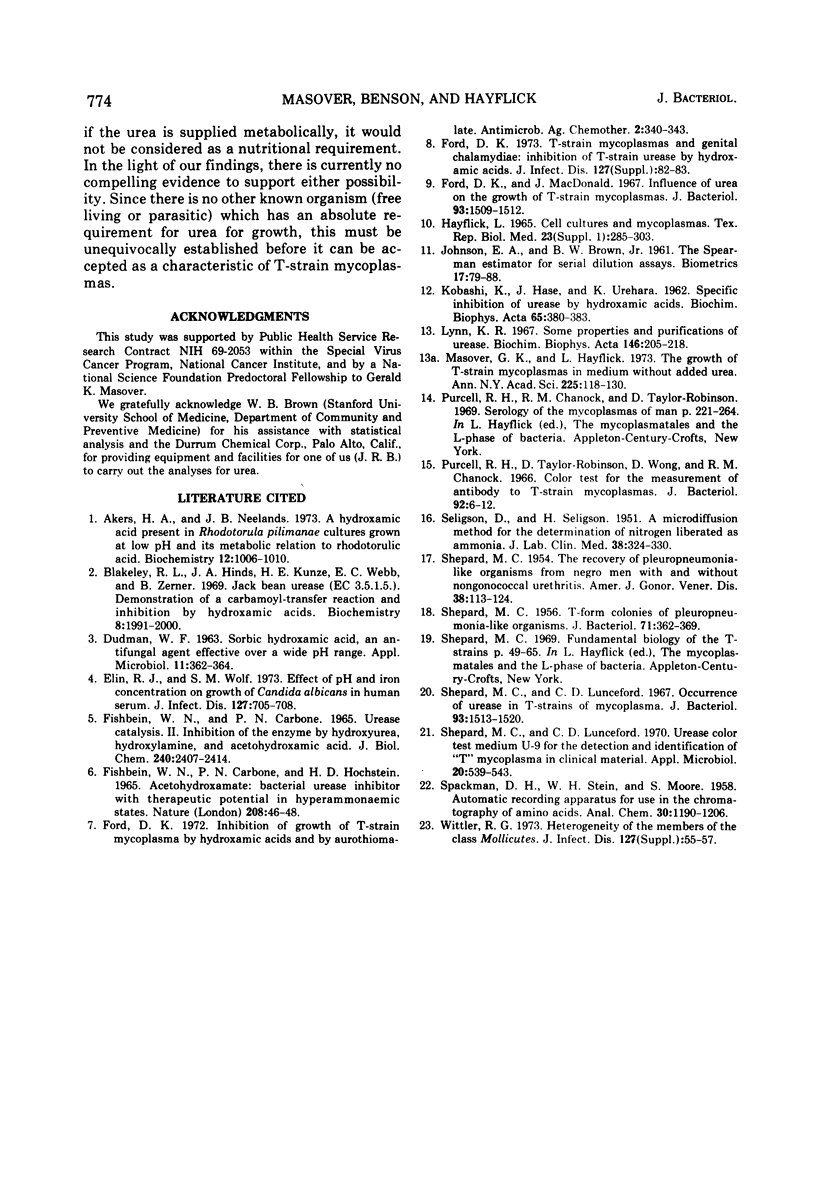
Selected References
These references are in PubMed. This may not be the complete list of references from this article.
- Akers H. A., Neilands J. B. A hydroxamic acid present in Rhodotorula pilimanae cultures grown at low pH and its metabolic relation to rhodotorulic acid. Biochemistry. 1973 Feb 27;12(5):1006–1010. doi: 10.1021/bi00729a034. [DOI] [PubMed] [Google Scholar]
- Blakeley R. L., Hinds J. A., Kunze H. E., Webb E. C., Zerner B. Jack bean urease (EC 3.5.1.5). Demonstration of a carbamoyl-transfer reaction and inhibition by hydroxamic acids. Biochemistry. 1969 May;8(5):1991–2000. doi: 10.1021/bi00833a032. [DOI] [PubMed] [Google Scholar]
- Dudman W. F. Sorbic Hydroxamic Acid, an Antifungal Agent Effective over a Wide pH Range. Appl Microbiol. 1963 Jul;11(4):362–364. doi: 10.1128/am.11.4.362-364.1963. [DOI] [PMC free article] [PubMed] [Google Scholar]
- Elin R. J., Wolff S. M. Effect of pH and iron concentration on growth of Candida albicans in human serum. J Infect Dis. 1973 Jun;127(6):705–708. doi: 10.1093/infdis/127.6.705. [DOI] [PubMed] [Google Scholar]
- FISHBEIN W. N., CARBONE P. P. UREASE CATALYSIS. II. INHIBITION OF THE ENZYME BY HYDROXYUREA, HYDROXYLAMINE, AND ACETOHYDROXAMIC ACID. J Biol Chem. 1965 Jun;240:2407–2414. [PubMed] [Google Scholar]
- Fishbein W. N., Carbone P. P., Hochstein H. D. Acetohydroxamate: bacterial urease inhibitor with therapeutic potential in hyperammonaemic states. Nature. 1965 Oct 2;208(5005):46–48. doi: 10.1038/208046a0. [DOI] [PubMed] [Google Scholar]
- Ford D. K. Inhibition of growth of T-strain mycoplasmas by hydroxamic acids and by aurothiomalate. Antimicrob Agents Chemother. 1972 Nov;2(5):340–343. doi: 10.1128/aac.2.5.340. [DOI] [PMC free article] [PubMed] [Google Scholar]
- Ford D. K., MacDonald J. Influence of urea on the growth of T-strain mycoplasmas. J Bacteriol. 1967 May;93(5):1509–1512. doi: 10.1128/jb.93.5.1509-1512.1967. [DOI] [PMC free article] [PubMed] [Google Scholar]
- Hayflick L. Tissue cultures and mycoplasmas. Tex Rep Biol Med. 1965 Jun;23(Suppl):285+–285+. [PubMed] [Google Scholar]
- KOBASHI K., HASE J., UEHARA K. Specific inhibition of urease by hydroxamic acids. Biochim Biophys Acta. 1962 Dec 4;65:380–383. doi: 10.1016/0006-3002(62)91067-3. [DOI] [PubMed] [Google Scholar]
- Lynn K. R. Some properties and purifications of urease. Biochim Biophys Acta. 1967 Sep 12;146(1):205–218. doi: 10.1016/0005-2744(67)90087-3. [DOI] [PubMed] [Google Scholar]
- Purcell R. H., Taylor-Robinson D., Wong D., Chanock R. M. Color test for the measurement of antibody to T-strain mycoplasmas. J Bacteriol. 1966 Jul;92(1):6–12. doi: 10.1128/jb.92.1.6-12.1966. [DOI] [PMC free article] [PubMed] [Google Scholar]
- SELIGSON D., SELIGSON H. A microdiffusion method for the determination of nitrogen liberated as ammonia. J Lab Clin Med. 1951 Aug;38(2):324–330. [PubMed] [Google Scholar]
- SHEPARD M. C. T-Form colonies of pleuropneumonialike organisms. J Bacteriol. 1956 Mar;71(3):362–369. doi: 10.1128/jb.71.3.362-369.1956. [DOI] [PMC free article] [PubMed] [Google Scholar]
- SHEPARD M. C. The recovery of pleuropneumonia-like organisms from Negro men with and without nongonococcal urethritis. Am J Syph Gonorrhea Vener Dis. 1954 Mar;38(2):113–124. [PubMed] [Google Scholar]
- Shepard M. C., Lunceford C. D. Occurrence of urease in T strains of Mycoplasma. J Bacteriol. 1967 May;93(5):1513–1520. doi: 10.1128/jb.93.5.1513-1520.1967. [DOI] [PMC free article] [PubMed] [Google Scholar]
- Shepard M. C., Lunceford C. D. Urease color test medium U-9 for the detection and identification of "T" mycoplasms in clinical material. Appl Microbiol. 1970 Oct;20(4):539–543. doi: 10.1128/am.20.4.539-543.1970. [DOI] [PMC free article] [PubMed] [Google Scholar]


